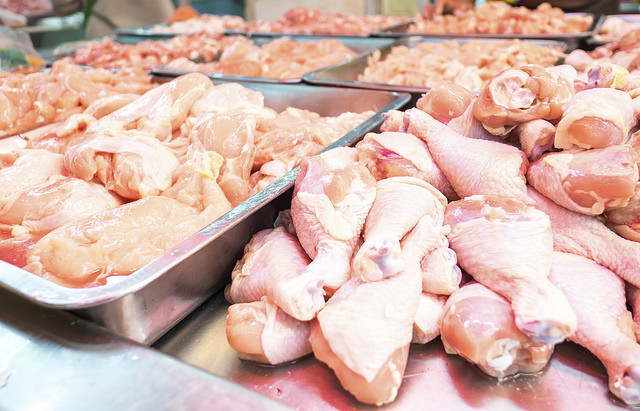



Why Food Contamination is a Bigger Problem Than You Realise
The food and drink industry is evolving all the time. Technology is constantly improving, as is our knowledge, and yet, food contamination remains a big problem, writes Laura Varley.Year after year, consumers are exposed to harmful bacteria found in the food they eat. It’s a serious issue – food poisoning is not just a nasty illness, it can result in hospitalisation and even death in extreme cases.
We take a look at just how big a problem food contamination is in the UK, as well as what businesses can do to prevent it.
How many incidents of food contamination occur each year?
According to the latest figures from the UK's Department for Environment, Food & Rural Affairs (Defra), the Food Standard Agency investigated 1,645 food and environmental incidents in 2014.
While the majority (58 per cent) were classed as ‘low’ are therefore presented little or no food safety issues, microbiological contamination accounted for almost a quarter (24 per cent) of all incidents.
Instances of microbiological contamination have been steadily rising since 2000, which is concerning. Another worrying figure is the fact 41 per cent of such contamination is due to the presence of E. coli.
In the same year, more than half a million cases of food poisoning from known pathogens occurred – though this figure would more than double if poisonings from unknown pathogens were included.
Further, some 2,500 people were hospitalised due to Salmonella exposure.
It is estimated that poultry meat was linked to the highest number of incidents (244,000), with products containing nuts, seeds, vegetables and fruit the second most common cause (48,000), followed by beef and lamb produce (43,000).

How does food contamination happen?
The problem with food contamination is that it can occur during any part of the chain, from the animal itself right up to the person serving the dish it ends up in.
Whether you’re a farmer, work for a packaging company or are a chef at a restaurant, it’s everyone’s responsibility to prevent food contamination. Here are some of the most common reasons why it happens:
- The animal itself has a bacterial infection (this can apply to meat, eggs and fish);
- The meat becomes contaminated during the slaughter of the animal;
- Whoever handles the produce does not wash their hands;
- The same utensil is used to prepared multiple foods;
- Food processing equipment is contaminated (e.g. it hasn’t been cleaned properly);
- The food has been left in or out of the fridge for too long.
How can businesses prevent contamination?
Since food contamination can happen at virtually any time, there are a lot of precautions and measures that need to be taken. Failing to provide good food hygiene is against the law and any instances of food poisoning can seriously damage the reputation of your business.
The Food Standard Agency recommends remembering the four Cs: Cross-contamination, cleaning, chilling and cooking.
Cross-contamination
Cross-contamination occurs when bacteria is spread between food, surfaces or equipment. Usually, it’s when cooked and raw foods come into contact with each other.
For example, if you touch a raw chicken breast and then pick up a bread roll without washing your hands in between, this means you’ve potentially carried over any bacteria found on the uncooked meat to the bread.
Cross-contamination is easy enough to avoid – just make sure you:
- Wash your hands before and after touching raw meat;
- Don’t place foods on the same surface as raw meat i.e. have separate chopping boards for meat and vegetables;
- Keep raw and cooked foods apart at all times, even in the fridge;
- Use separate packing machines for cooked and raw products.
Cleaning
It’s not only vital to keep your hands sanitised, all equipment, utensils and machinery you use must be cleaned in-between uses too.
Make sure that any cleaning products you use meet BS EN standards and try to clean as you go along. Letting food waste pile up will increase the chance of contamination occurring.
Chilling
According to the law, cold food must be kept at 8°C or below – any warmer than that and there is a risk of bacteria growth. To ensure your food is always kept at the correct temperature, we recommend doing the following:
- Checked the chilled product when it arrives – does it feel cold enough?
- Place all chilled produce in the fridge as soon as possible. Do not leave it out to get warm;
- Check your fridge/display unit is set to the correct temperature;
- Cooked food should be placed in the fridge as soon as it has naturally cooled down.
Cooking
Cooking food thoroughly is incredibly important, especially when it comes to meat, as most forms of bacteria are killed off this way.
While it is generally okay to serve rare cuts of beef and lamb, poultry and mincemeat products must be cooked all the way through. If you are reheating food, ensure that it’s piping hot in the middle, not just the outside.
Wrapping and packaging
This is another important part of the food preparation process, as contamination can occur here too. Firstly, you need to think about what materials will be used to wrap your produce – polythene is one of the most common used, but the materials on your machinery matter too. Silicone rubber, for example, is widely used throughout the industry due to its fantastic sealing properties.
Whatever you choose to use, make sure it does not contain any harmful chemicals nor tears easily. Any gaps in the packaging is likely to result in contamination.

Food poisoning is far from a thing of the past, contamination is all too common and can have a huge impact on your business, as well as your customers. Make sure you and your staff receive proper food safety training – only then can you be sure proper procedures will be followed and mistakes won’t be made.
Laura Varley is an experienced journalist who specialises in a wide variety of matters such as technology and current affairs. She wrote this article on behalf of Silicone Engineering, silicone rubber solution specialists.








